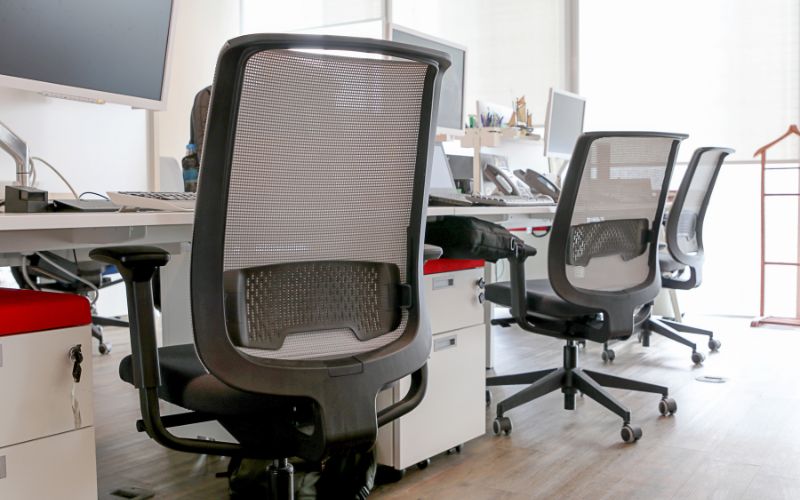Understanding Ergonomics and Its Importance
Ergonomics is the study of how people interact with their work environments. It involves designing workstations and equipment to fit the user’s physical abilities and limitations. Good ergonomics help reduce the risk of injury and pain, improve productivity, and overall well-being. When it comes to back pain, ergonomics plays a critical role in preventing and managing discomfort.
Common Causes of Back Pain
Back pain can occur for many reasons, including poor posture, lack of movement, or physical injury. However, some of the most common causes include:
Sitting for Long Periods
Sitting for long periods, especially with poor posture, can lead to back pain. This is because sitting places more pressure on your spine than standing or lying down.
Additionally, many people tend to slouch or hunch over while sitting, which can strain the back muscles and cause discomfort.
You can try using Back Support for your Chair.
Poor Ergonomics
Using equipment that is not designed to fit your body can lead to discomfort and injury. For example, using a chair that does not support your back or a keyboard that is too high can cause pain and strain in the back muscles.
Lifting Heavy Objects
Lifting heavy objects, especially with poor form, can cause back pain. This is because it places stress on the back muscles and spine, leading to strain or injury.
Best Practices for Ergonomic Design
When it comes to designing an ergonomic workstation, there are several factors to consider. By implementing the following tips, you can help reduce the risk of back pain and improve overall comfort and productivity:
Choose the Right Chair
Choosing a chair that supports your back is essential for good ergonomics. The chair should be adjustable, allowing you to adjust the height and angle of the seat and backrest. Look for a chair with lumbar support, which helps maintain the natural curve of your spine.
Position Your Computer Screen Correctly
Your computer screen should be positioned at eye level, with your neck in a neutral position. This helps reduce strain on the neck and shoulders, which can lead to back pain. Additionally, the screen should be an arm’s length away, and the keyboard should be at a comfortable distance from your body.
Take Frequent Breaks
Taking frequent breaks can help prevent back pain by reducing the amount of time you spend sitting in one position. Every hour, take a short break to stretch or stand up and move around.
Use a Standing Desk
Using a standing desk can help reduce the amount of time you spend sitting, which can alleviate back pain. Standing desks come in various styles, from adjustable to full-size models. When using a standing desk, ensure that the keyboard and mouse are at a comfortable height and that your posture is correct.
Maintain Good Posture
Maintaining good posture is essential for preventing back pain. Sit up straight with your feet flat on the floor, and avoid slouching or hunching over. When standing, keep your shoulders back and your weight evenly distributed.
FAQ
Yes, poor ergonomics can cause long-term back problems, such as chronic pain or injury. It is essential to adopt proper ergonomic design to prevent and manage back pain.
Standing all day is not necessarily better for your back than sitting. It is essential to alternate between sitting and standing and take frequent breaks to prevent discomfort and strain on your back muscles.
Some exercises that can help alleviate back pain include stretching, yoga, and core strengthening exercises. It is essential to consult with a healthcare professional before starting any new exercise program.
Your chair should support your back, allowing your feet to rest flat on the floor and your knees to be at a 90-degree angle. The chair should also be adjustable, allowing you to customize the seat and backrest height and angle.
Yes, ergonomic design can improve productivity in the workplace by reducing discomfort and promoting better posture and movement. When employees are comfortable and pain-free, they can focus better on their work and be more productive.








